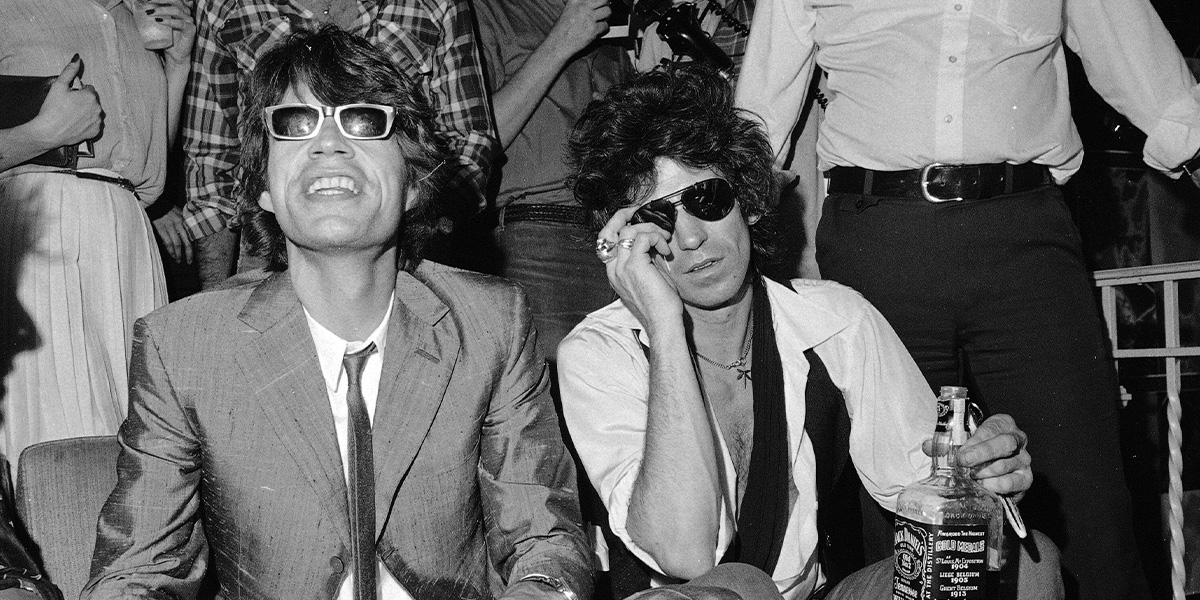New York City in the 1970s was volatile. To stave off bankruptcy, the city laid-off a mass of firefighters and policemen, while funding for schools and sanitation services was cut. Crime thrived; car thefts and murders more than doubled in the space of five years. The subway, assaulted with graffiti, was dubbed ‘the mugger’s express’.
Those with money fled to the suburbs, leaving blocks of abandoned housing. Buildings began to rot or burn, set alight by desperate landlords who could no longer afford the upkeep.
Rising from the smoky ashes of dilapidation, the glowing, gritty New York city nightlife took shape. Studio 54 and The Mudd Club exploded onto the darkened city like rockets, propelled by a heady concoction of loose morals, money and escapism. We take a look behind closed doors at the hedonistic happenings that inspired our Autumn Winter 23 collection.
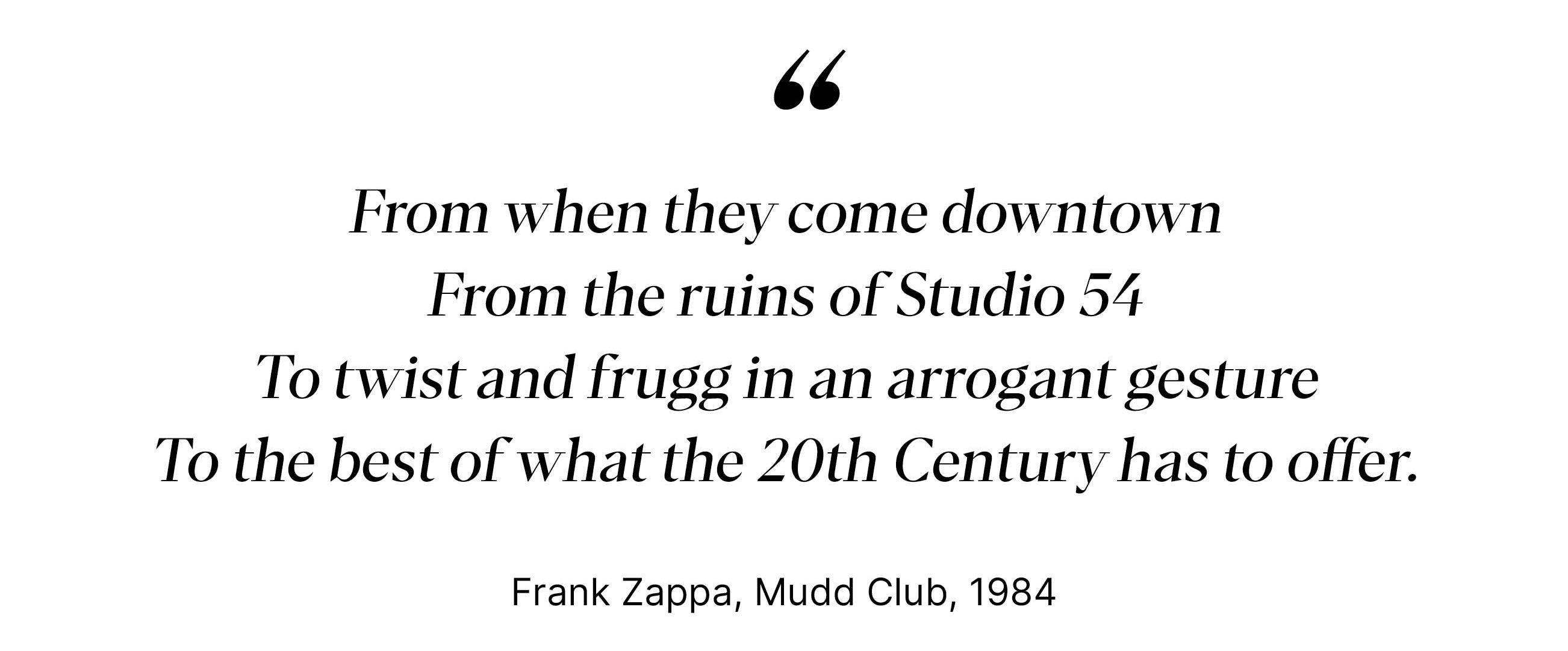
The Spectacle of Studio 54
In 1977, founders Ian Schrager and Steve Rubell spent 6 weeks transforming a former opera house into a now-mythologised destination. Alongside a team of architects, set designers, florists and event planners, they bombarded the senses. Confetti canons and a revolving floor whirled through the space, while a giant crescent moon with a spoon moving to and from its nose hung from the roof.
On opening night, traffic was brought to a standstill, caught in a swell of hopeful partygoers. Frank Sinatra was trapped in his limousine, while Cher, and an 11-year-old Brooke Shields slipped inside. Out on the street, a doctor handed hypnotic-inducing pills to those waiting beside him – the atmosphere descended into bacchanalia as men and women shed their clothes and the sounds of sirens clotted the air. The legend of Studio 54 began.

Backdropped by the downtrodden New York streets, the diamond-dusted glamour of the club was flung into sharp relief, as Mick Jagger, Diana Ross and John Travolta rubbed shoulders by the DJ decks. Excess and extravagance was built into the bricks; four tonnes of glitter rained down onto the dance floor at the 1977 New Year’s Eve party; Bianca Jagger was surprised with a white horse on her birthday – an iconic moment immortalised by photographer Rose Hartman; Dolly Parton was met with donkeys, mules and chickens running across the stage when she came to town for a concert. Nothing was too wild or debaucherous for the Studio 54 denizens.
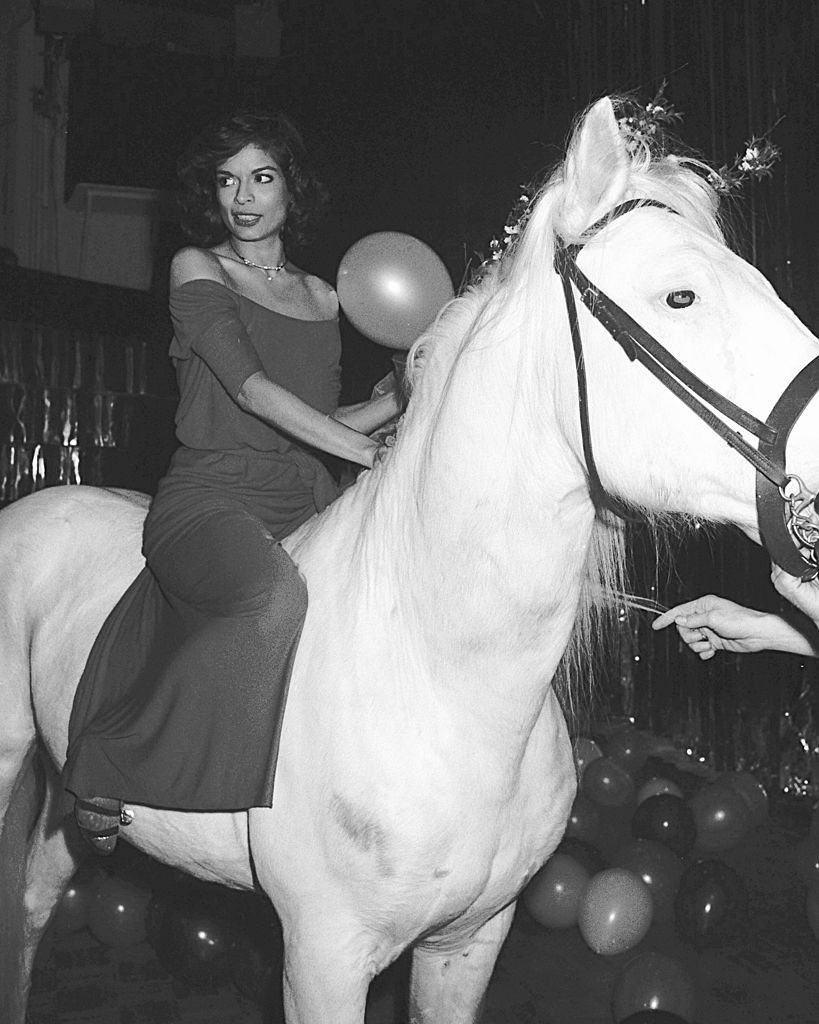
The Mudd Club Mayhem
One year on, in a rundown section of lower Manhattan – a no-man’s land of abandoned buildings and shadowy street corners – emerged The Mudd Club. In contrast to the grandeur and excess of Studio 54, founders Steve Mass, Diego Cortez and Anya Phillips converted the non-descript building on a shoe-string budget. The dingy space was initially kitted out with a bar constructed from folding tables and a bathtub of ice to chill the drinks.
A conscious ‘anti-glamour’ atmosphere was created. Studio 54’s elitist red rope on the door was sardonically mimicked with a chain across The Mudd Club. The downtown antidote to uptown glitz. Club Doorman Richard Boch recounted in his book, The Mudd Club, that the ‘kiss of death’ for hopeful queuers would be if they mentioned that Studio 54 let them in.
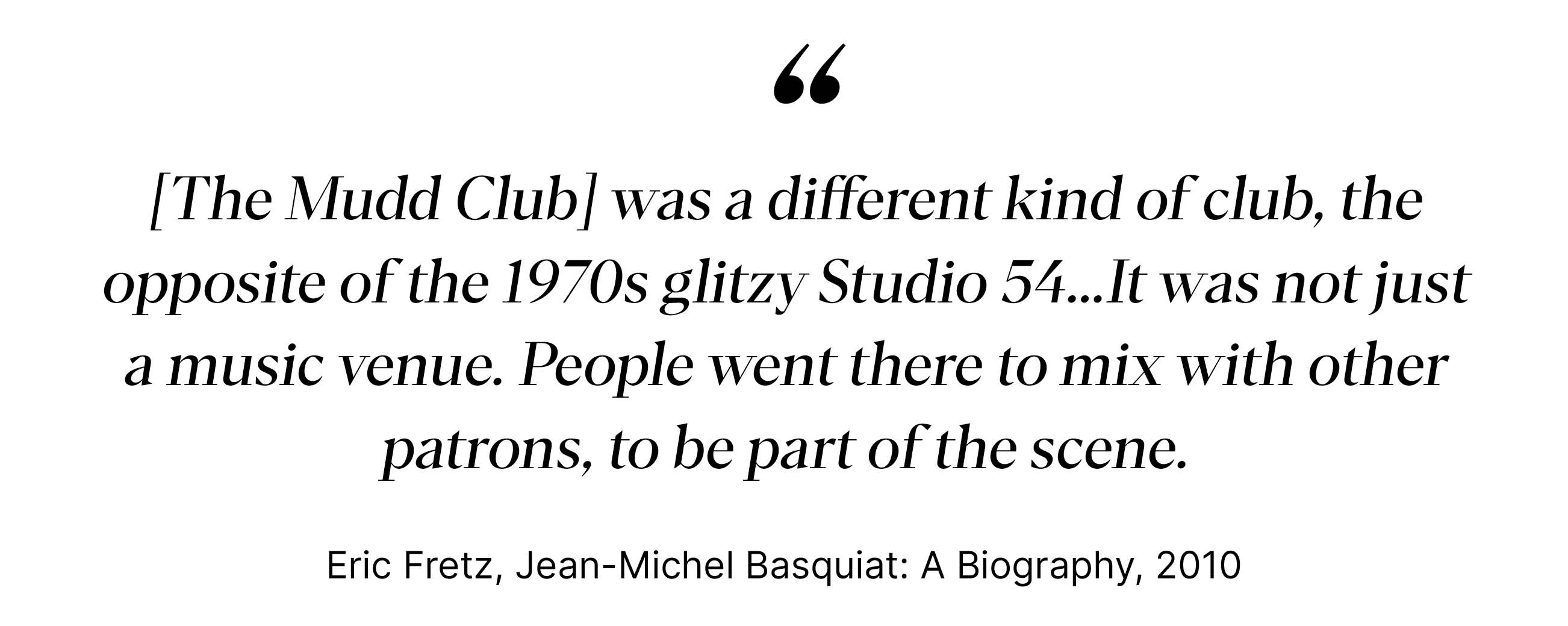
Opening its doors at midnight each night, The Mudd Club became the After Party destination for those in the know. But it wasn’t just about the music. At a time when the New York gallery scene was virtually inaccessible to up-and-coming artists, The Mudd Club provided a platform and space to exchange ideas. While a DJ and human-sized steel cage dominated one floor, an art space curated by Keith Haring occupied another. It was during a night at The Mudd Club that a then-unknown Jean-Michel Basquiat met founder and curator Diego Cortez. Two years later, Cortez featured Basquiat in the culture-shifting New York/New Wave exhibition, propelling Basquiat into the spotlight.
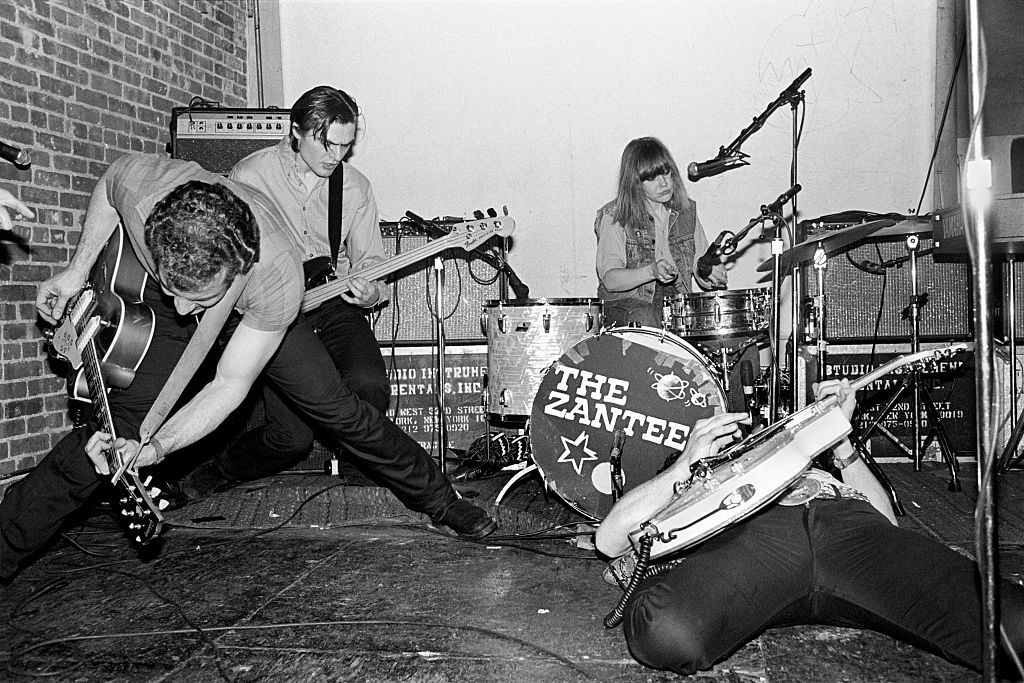
Kink, Kink, Kink
Backdropped by the Stonewall Riots and the Sexual Revolution of the 1970s, Studio 54 and The Mudd Club became scenes of debauchery and drug-fuelled delirium. In darkened corners, partygoers slipped on their sunglasses to shield their eyes from view. With no smartphones and a tight camera policy, inhibitions were let loose. A primal hedonism ruled the night.
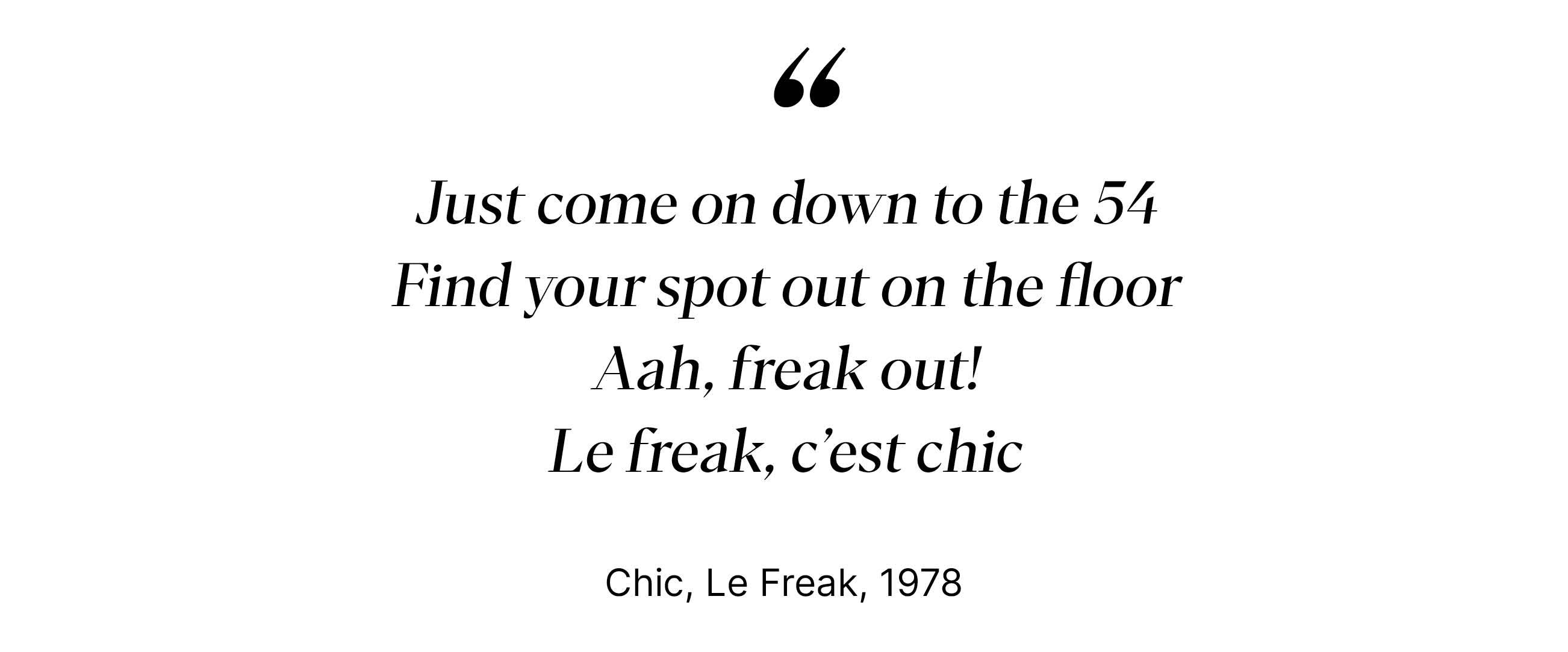
The two clubs synonymised the very best of New York City nightlife. Studio 54 represented the pinnacle of The Party, as Diana Ross owned the floor and confetti rained down from the roof. The Mudd Club epitomised The After Party, where conversations were had, connections were created, and weird, wild ideas formed. Andy Warhol moved seamlessly between the two.
These scenes set the tone for the Autumn Winter 23 collection. The dazzling lights and dusky street corners of 1970s New York were transposed into a palette of vibrant and hushed hues. Cat-eyes are bolder, square frames more daring; these frames push the boundaries of design.
Discover The Collection



